*FYI - this post may affiliate links, which means we earn a commission (at no extra cost to you) if you purchase from them. Also, as an Amazon Associate, I earn from qualifying purchases. For the full scoop on what this means, feel free to check out our Privacy Policy and Disclosure.
Figuring out how to recycle in Munich (and Germany in general) is tricky business. If you’re new to the city, your first garbage run might leave you in awe of the overwhelming bin types, colours, and options… have no fear! We’ve got the ultimate easy to understand guide for you!
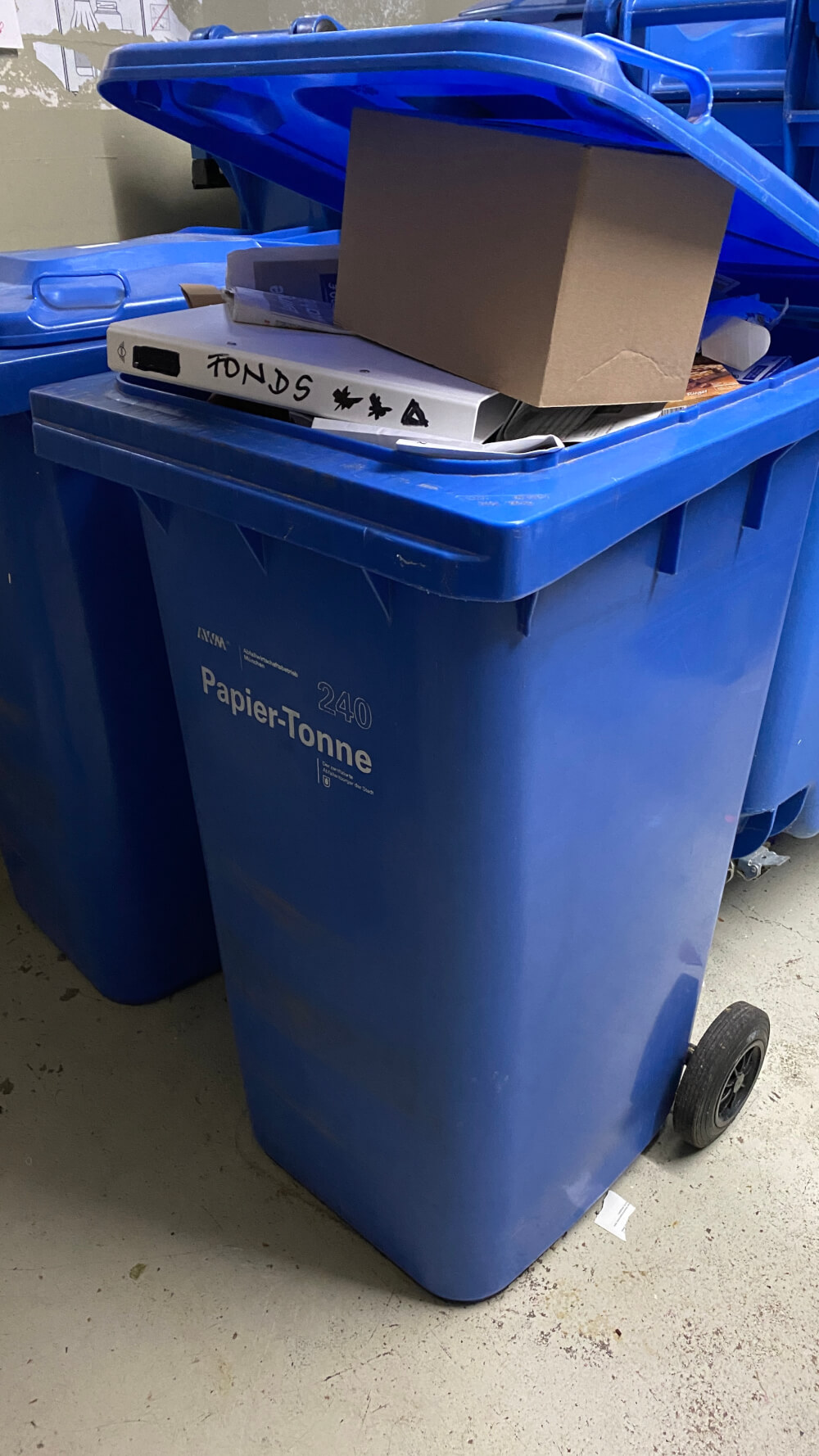
Trust us, we know do understand the feeling. Even after many years living in Munich, we’re still not 100% sure we’re recycling milk cartons correctly…
But that’s why we’re here today! We’ve done all the research about how to recycle in Munich so you don’t have to.
So, if you need help understanding the procedure in English, this article will demystify the process for you in simple terms!
Table of Contents
Recycle in Munich: The Basics
Generally speaking, there are three main places where you’ll be disposing of waste/recycling in Munich: at your own home/building, at recycling islands (AKA Wertstoffinseln in German), and at supermarkets & beverage shops (only for recyclable beverage containers).
Bulky waste (think large items like furniture) and “problem waste” must also be handled differently, and are usually taken to recycling centers, picked up for a fee, or taken to mobile collection mobiles (e.g. the Giftmobil) at set times.
Confused yet? Don’t worry – below, we’ll explain what should be disposed where.
Recycle in Munich: Recycling And Waste Disposal At Home
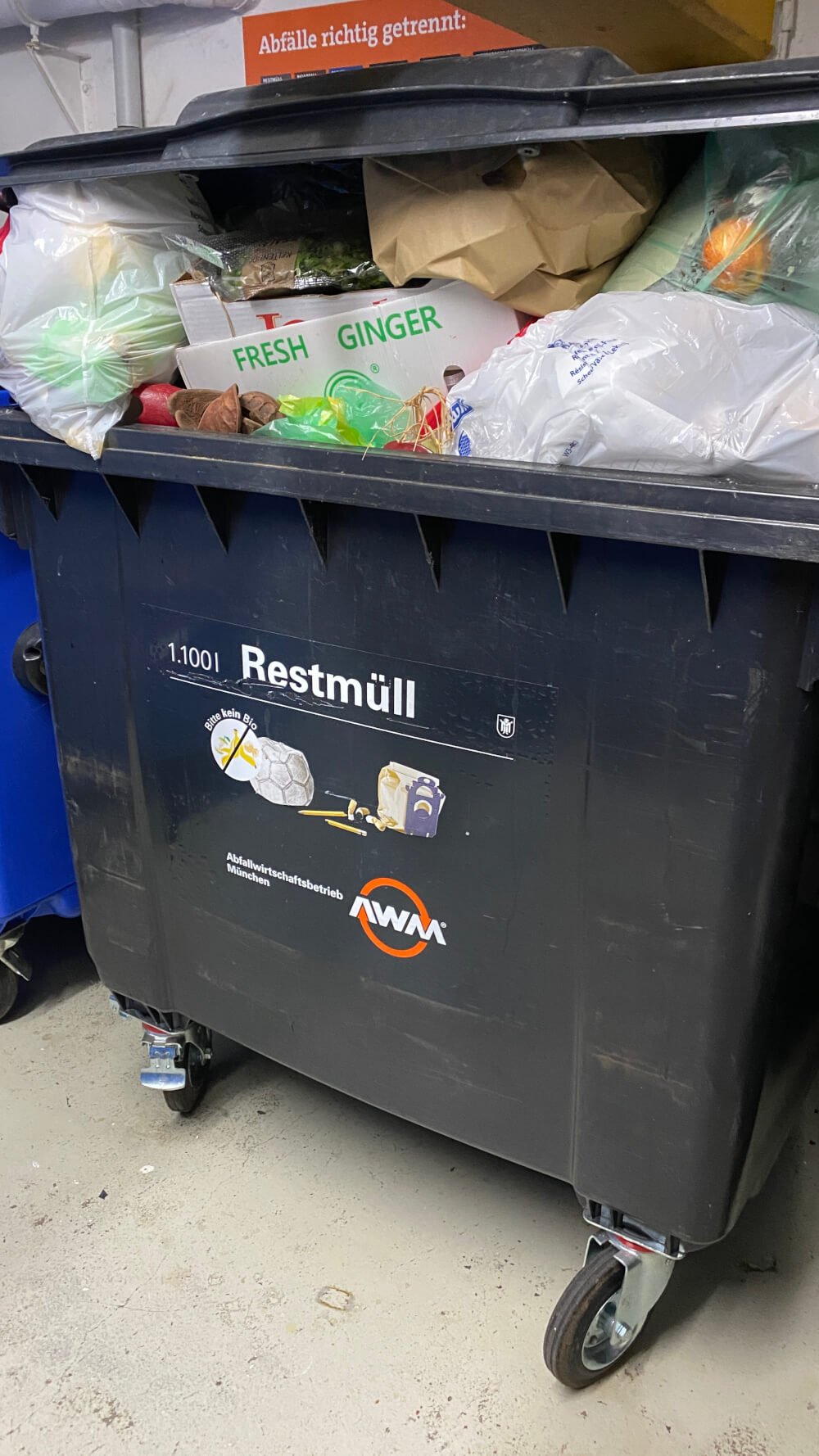
At your own home, you should have special bins for the following: Rest-Müll-Tonne (grey bin), Papier-Tonne (blue bin), and Bio-Tonne (brown bin).
Rest-Müll-Tonne refers to “residual waste” that cannot be recycled. These items are burned in the city’s thermal power station to create electricity and heating.
The following items should be disposed of in the GREY Rest-Müll-Tonne bin:
- Diapers, sanitary towels and tampons
- Hygiene papers i.e. paper handkerchiefs, cosmetic tissues, paper towels
- Plastic trash bags
- Vacuum cleaner bags
- Coated paper like stickers and photos, baking paper, gift wrapping paper
- Any dirty paper
- Wax paper, charcoal paper, carbon paper
- Painter’s foils
- Wallpaper
- Leftover carpeting
- Ashes
- Litter from small animals
- Cigarette butts
- Rubber items
NOTE: It is important that no electrical items or “Problem Waste” is put in the Rest-Müll-Tonne. Problem waste includes any items that may be harmful to people/the environment, such as energy saving and fluorescent lightbulbs, batteries, medication, varnishes like nail polish/nail polish remover, etc. We’ll address how to recycle these below.
Papier-Tonne refers to clean and uncoated paper. This paper is then recycled into new paper.
The following items should be disposed of in the BLUE Papier-Tonne bin:
- Newspapers and magazines
- Cardboard boxes (folded)
- Packing paper (without tape)
- Catalogues and brochures
- Schoolbooks
- Books (without a plastic cover)
- Forms and computer paper
- Letters and letter envelopes
- Clean paper bags
- Paper packaging
- Cigarette boxes (without aluminium paper and without foil)
- Chocolate boxes (without plastic)
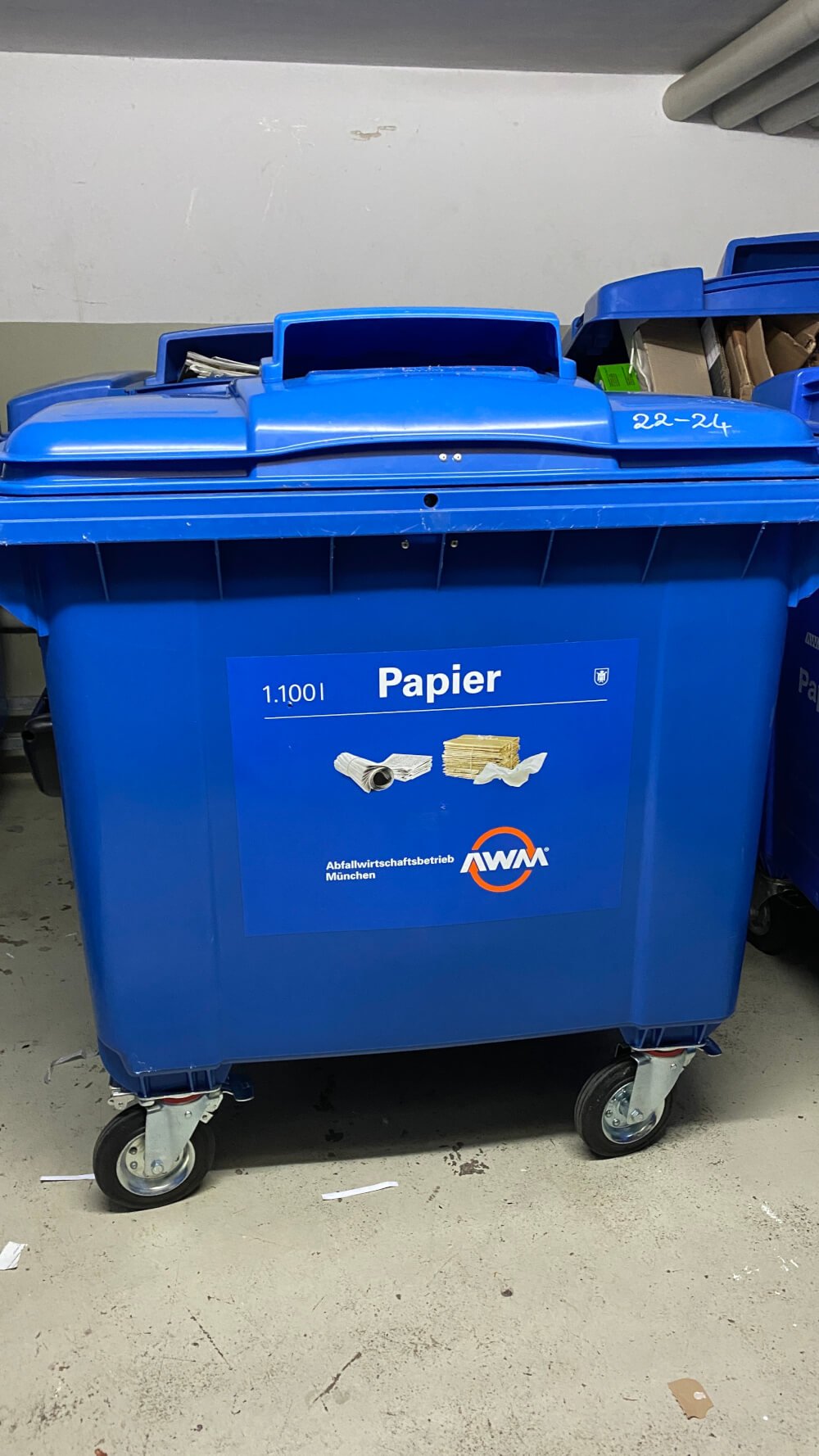
Bio-Tonne refers to compostable waste. In simple terms, this is anything that can rot. Materials here are then used for electricity and soil.
The following items should be disposed in the BROWN Bio-Tonne bin:
- All kitchen waste (including meat and fish leftovers)
- Leftover fruit and vegetables
- Potato peels
- Egg peels
- Coffee filter bags
- Tea bags
- Withered bouquets of flowers
- Pot plants (without a pot)
- Garden waste like leaves, grass, weeds, tree cuttings, soil
- Soiled paper napkins and paper towels (without oil)
- Newsprint (crumpled up to soak up moisture)
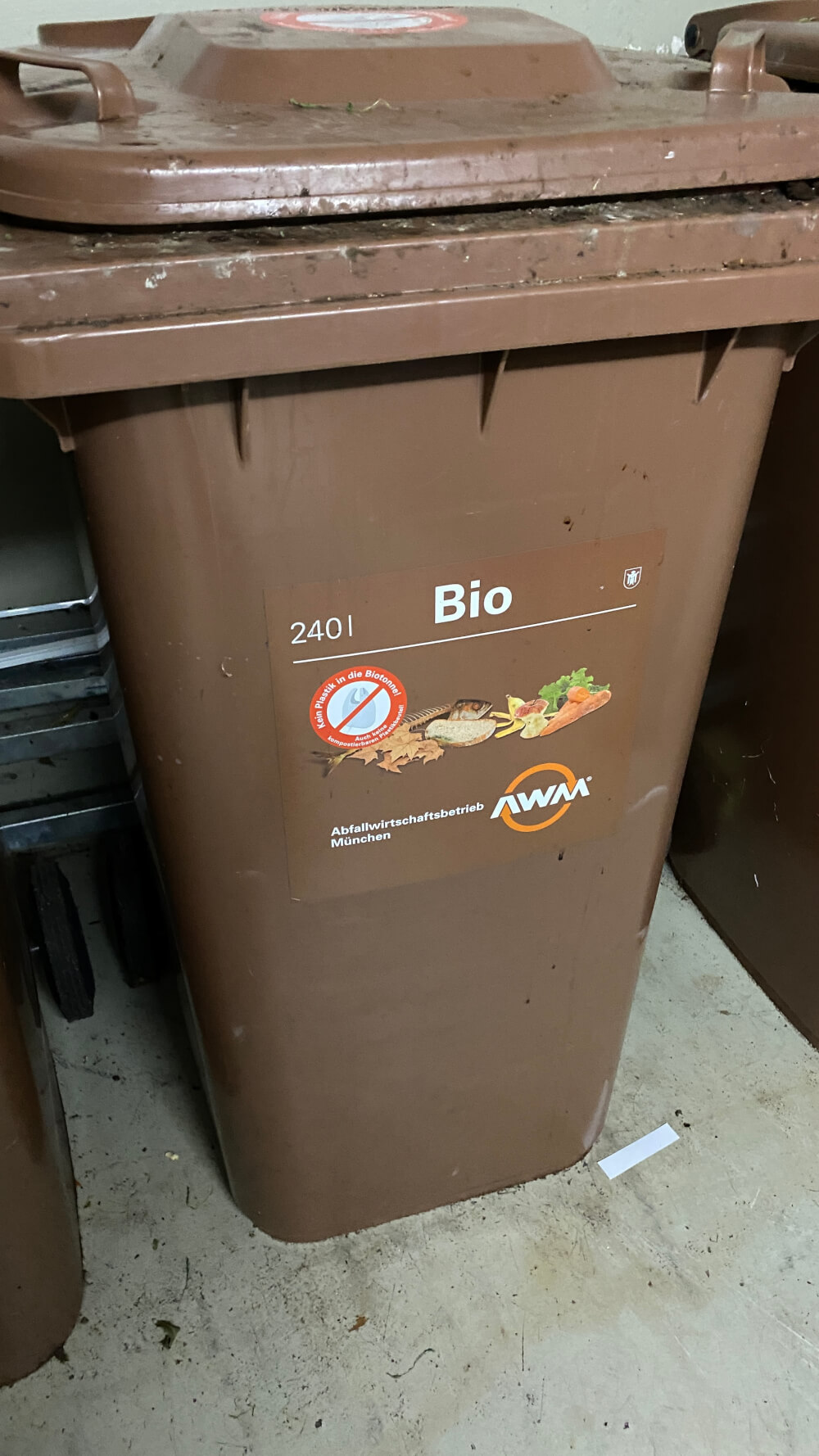
NOTE: It is important that no plastic bags (even biodegradable ones) go into the Bio-Tonne. Many bins will have a “no plastic bags” sticker on them to remind you, and they do take this seriously! The official AVM website has explicitly stated here that even biodegradable/compostable bags may not enter in the Bio-Tonne, because these bags take too long to decompose.
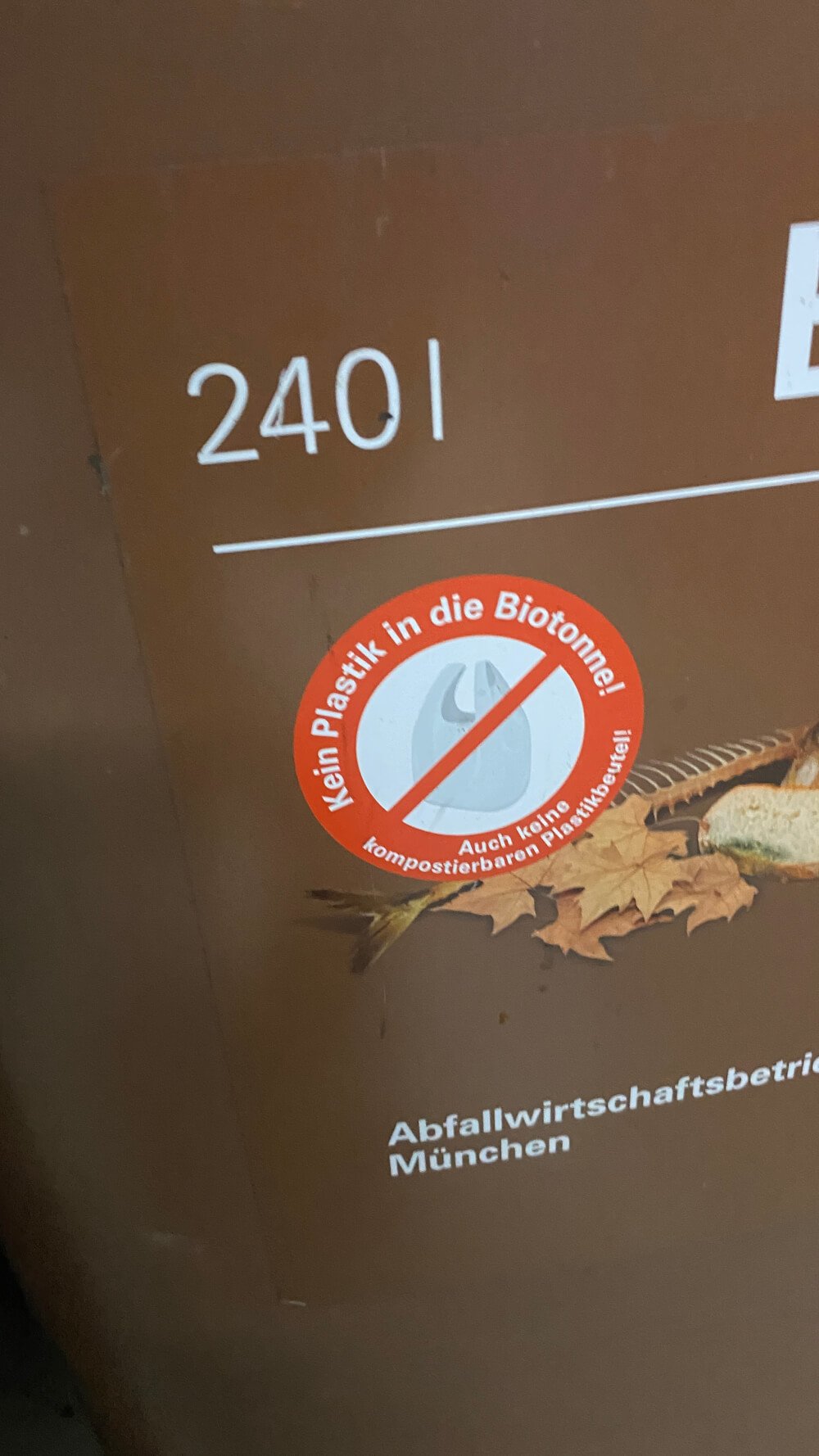
Recycle in Munich: Recycling Islands (Die Wertstoffinseln)
All around Munich, you’ll find special recycling stations meant for “packaging waste” like different kinds of glass, metal and plastic.
You can find a map of all the recycling stations around Munich here.
But what kind of containers go where? Most of these recycling islands will have pictures to guide you through the process of deciding between different colours of “Glas” and plastics.
You can find a quick guide based on the official guide from AWM Munich here, but just follow the signs on the individual bins and you should be fine.
This bin for example is meant for metal, plastic, and composite materials like Tetra Paks:
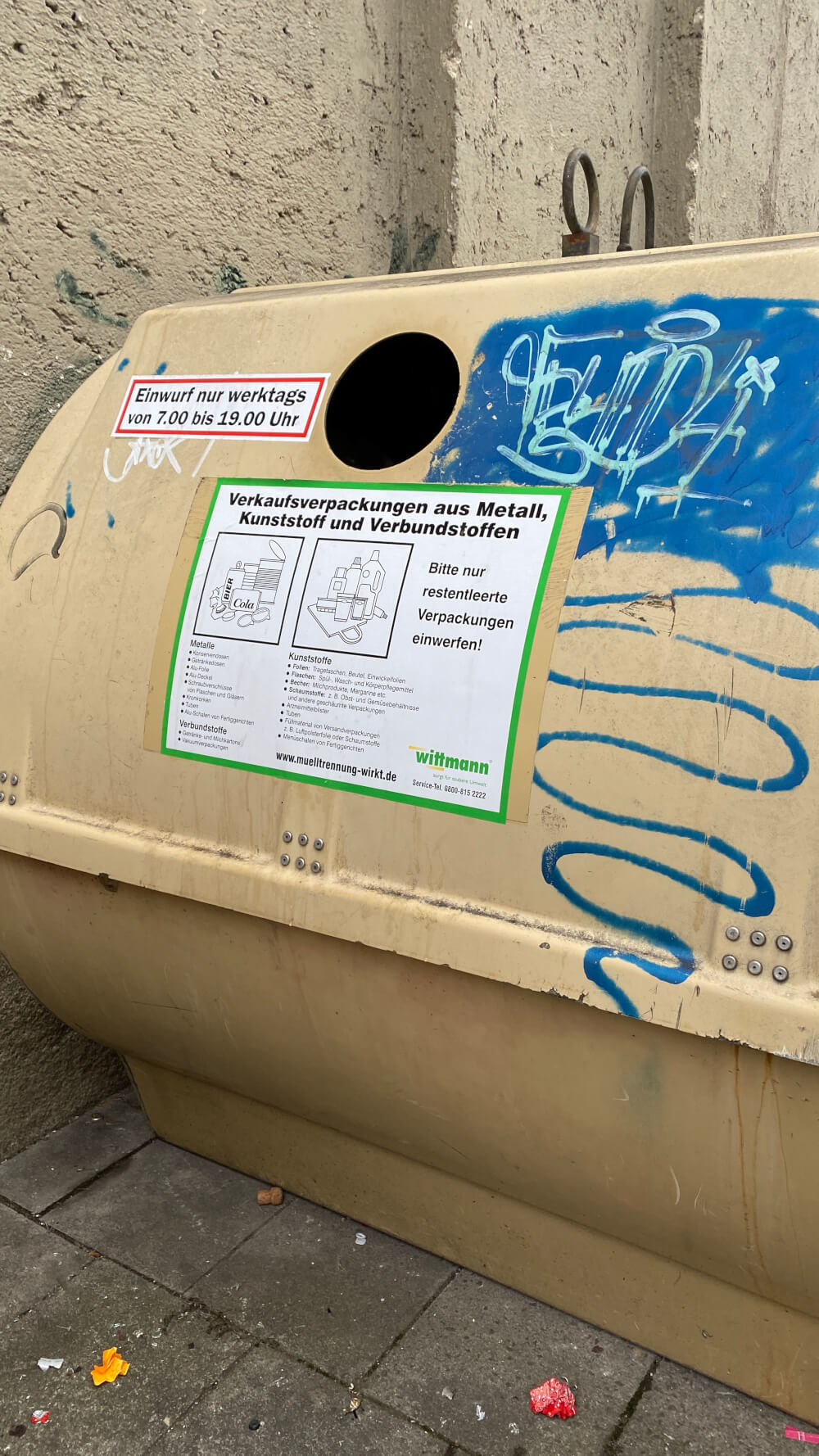
This bin is for “brown glass”, like most local beer bottles for instance:
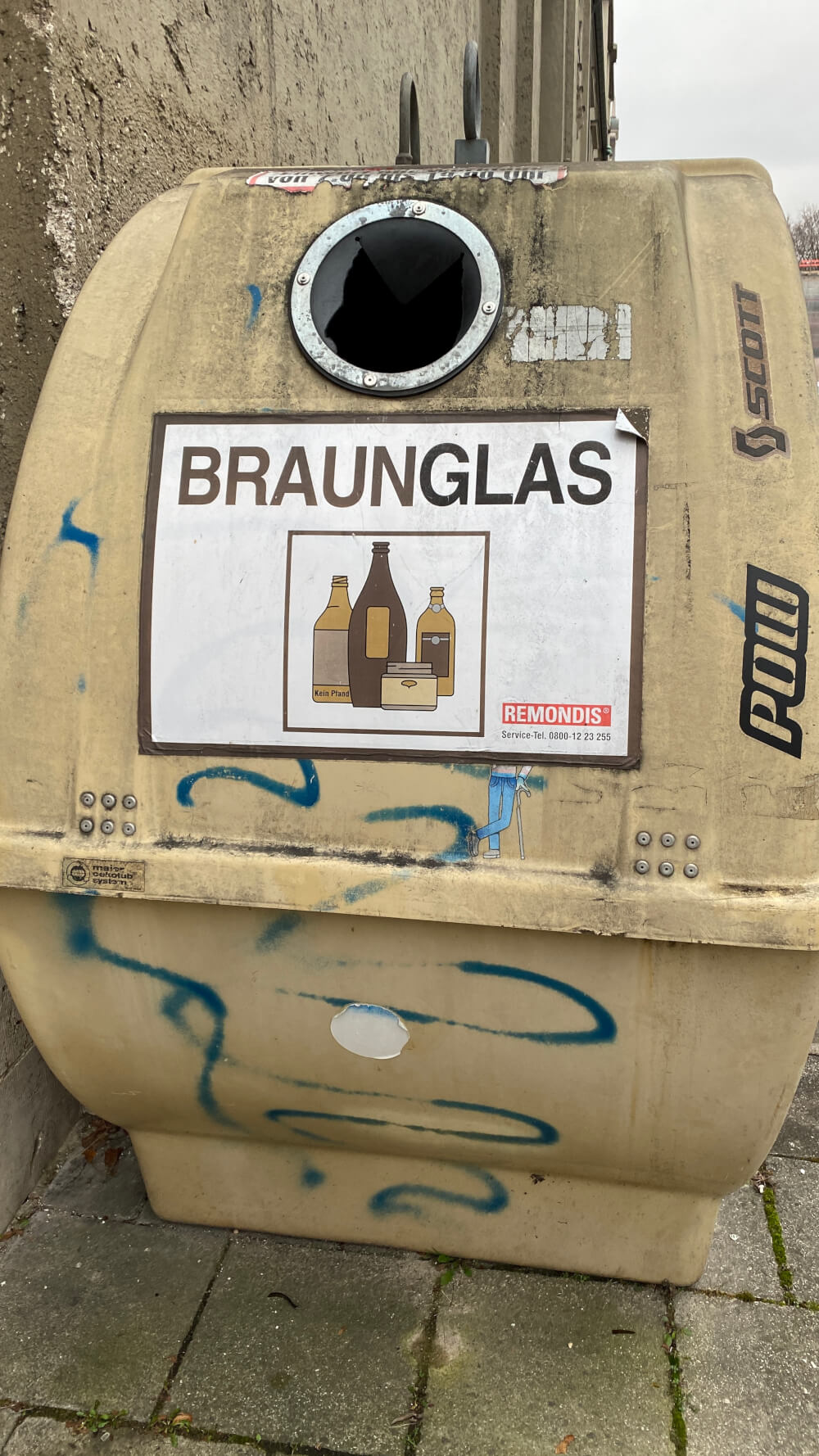
This bin is for “green glass” like Jägermeister bottles for instance:
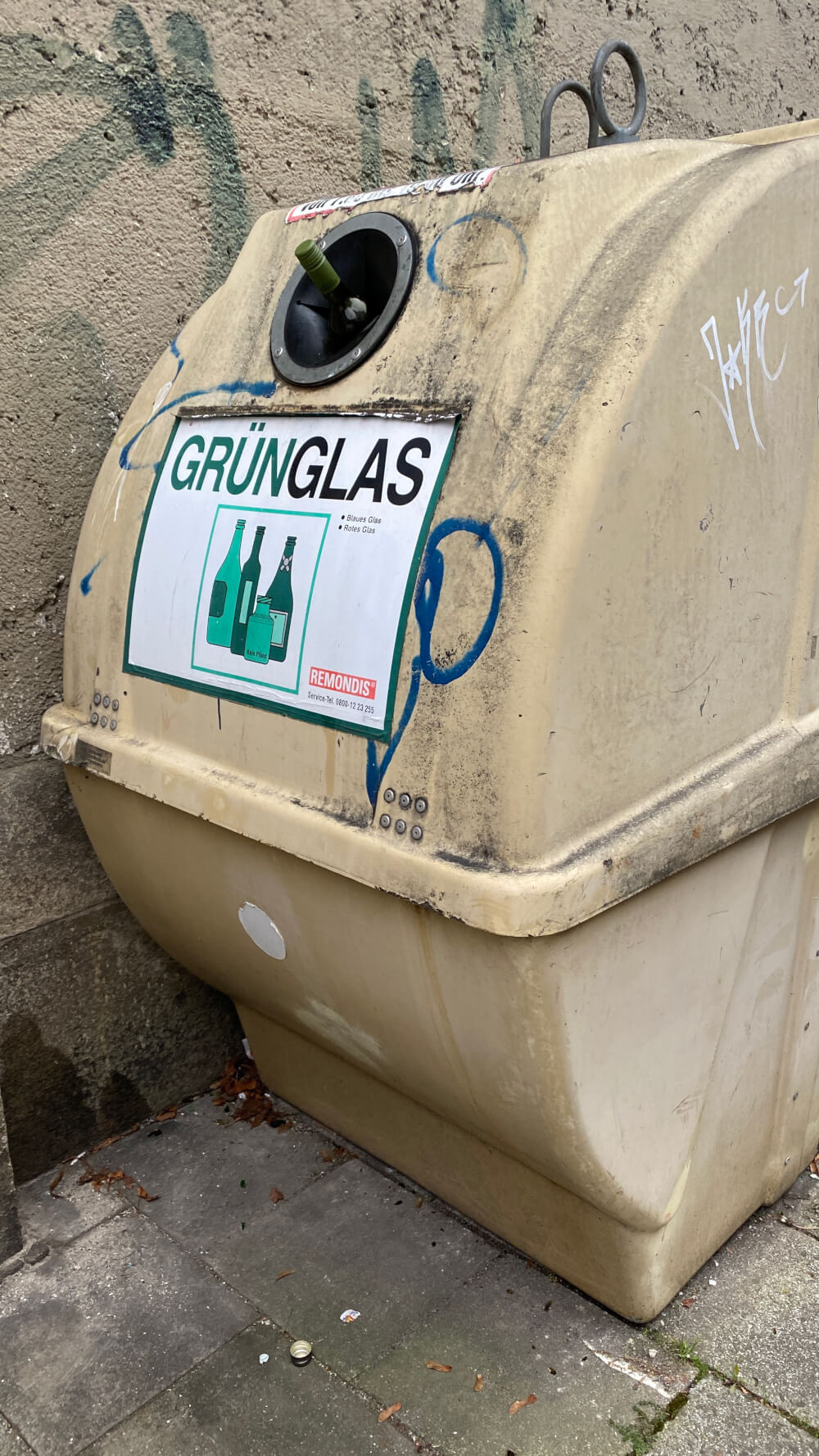
And then of course this bin is for “white glass”, like most jam jars:

NOTE: These Wertstoffinseln are a pretty controversial aspect of the city, with many campaigns like this one trying to get rid of them due to negative aspects of their existence like bad smells, unsightliness, noise, etc. Nonetheless, this is the system that we have to comply with for now, so hopefully this info helps you decide what to put where!
Finally, you should know that drop-offs at these recycling islands may only take place between Monday – Saturday from 7am to 7pm. This is because the process of dropping glass into a pile of more glass is (unsurprisingly) pretty loud.
Out of respect for residents, you should adhere to these times, and most definitely never try to recycle on a Sunday, or face the wrath of whichever Oma finds you first.

Recycle in Munich: Getting Pfand Back for Recyclable Bottles
Now, to truly assimilate into local culture, you need to become join the Pfandom of Pfand.
That is, you need to become a Pfand fan.
Pfand is essentially a deposit that you pay for the bottle, which you get back upon returning the bottle. In practical terms, let’s say you’ve bought a bottle of beer for a euro. Well, 8 cents out of that euro is actually the Pfand, so if you decide to return the bottle upon finishing your beer, you are entitled to 8 whole cents, meaning your beer itself only cost you 92 cents.
Simple enough, right?
Bringing your bottles in for Pfand purposes is (generally speaking) pretty easy, although it can have its stressful elements.
Don’t worry though – the process is largely automated. Most large supermarkets will have a fun machine that you can feed your bottles into to get your Pfand, which is printed as a ticket with a monetary value that you can bring to the Kasse (cashiers) for redemption.
Here’s what one of the fun machines looks like:
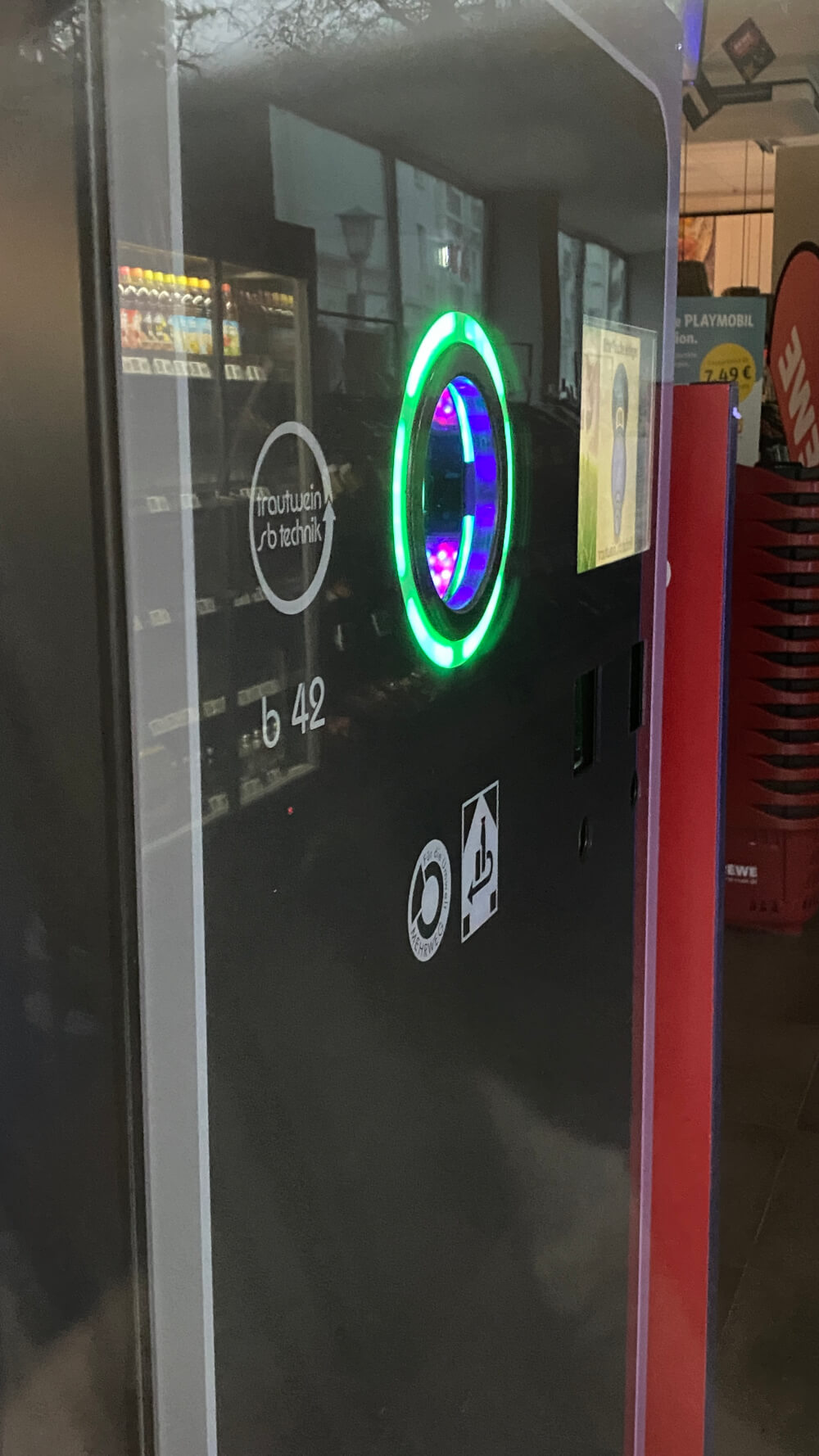
BUT, not all bottles can be brought back for Pfand! Some are simply recycled in the plastic bin of the Recycling Islands. When in doubt, check the bottle’s label. If it has no Pfand, usually it should say so, like this orange juice bottle:

Lastly, we should note that (as a Pfand beginner), you should be going to big supermarkets at off-peak times to attempt your little Pfand heist. This is because line-ups can get long and the situation is pretty stressful as a newbie when there’s a growing line-up of disgruntled locals behind you.
Larger supermarkets are also ideal because (technically), shops are only required to accept your bottles if they sell an equivalent bottle type. Supermarkets therefore usually cover all your bases.
Broken into steps then, this is what you need to do in order to get Pfand back for your beverage containers:
- Save up and collect all your Pfand-eligible drink containers – bonus local points if you shove them all in an old Aldi tote
- Head to your local supermarket or Getränkemarkt at a (hopefully) off-peak time
- Deposit your bottles into the machine, which will automatically calculate how much Pfand you’re entitled to. You’ll sometimes find that the machine won’t take some bottles – this could be due to it being a Pfand-less bottle, a bottle not from Germany, etc. Don’t worry – just put them back in your bag and move on
- Take the ticket that has been printed with the monetary amount you got for all your bottles
- Present the ticket to your cashier – they’ll know what to do
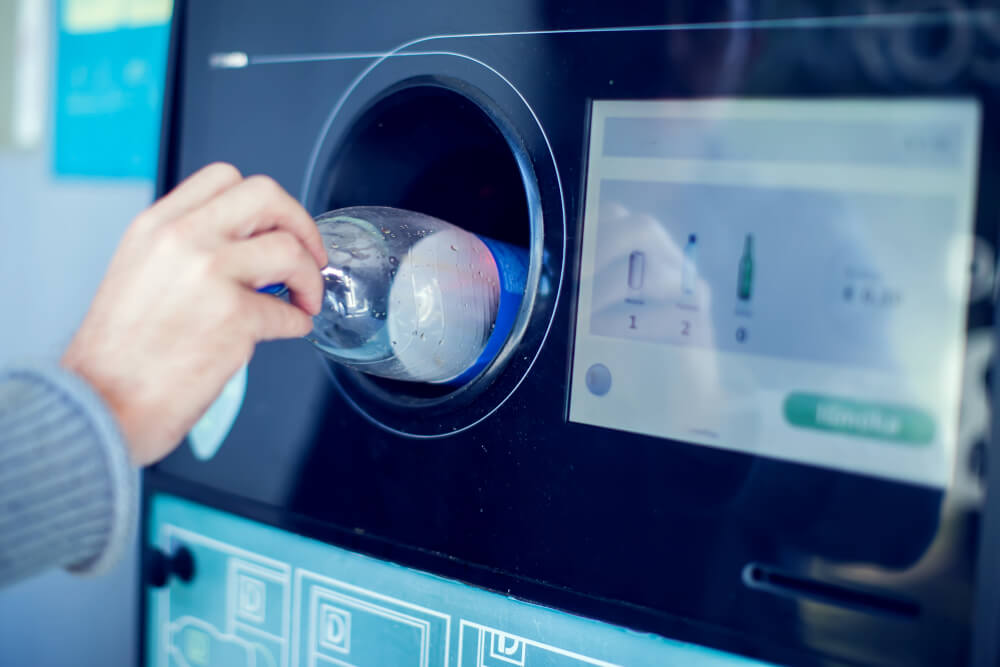
Recycle in Munich: How To Dispose of Bulky Waste
If you have bulky waste like old furniture and appliances, mattresses, old bikes, etc., the process for disposal is a bit different. You are NOT allowed to simply leave these items in front of the collection bins and hope for the best.
Rather, your two options are:
- Bring it to a Recycling Center, up to 2 cubic meters per day (click here for a map of recycling centers)
- Pay for a Bulky Waste pickup from AVM Munich (click here for pricing and details)
NOTE: According to the AVM website, their collection service has a wait time of 3-4 weeks, so it’s best to plan ahead.
The following items are not available to be picked up by the AVM Bulky Waste collection service:
- Building rubble, wash basins, window glass, car tires, problem waste, residual waste, green and garden waste
- Objects that cannot be carried by two people
- Items in boxes, boxes or bags
- Waste that is generated by third parties in the course of commercial activity ( e.g. during renovation measures, etc.)
Recycle in Munich: How To Dispose Of Problem Waste
As previously mentioned, problem waste includes any items that may be harmful to people/the environment, such as energy saving and fluorescent lightbulbs, batteries, medication, varnishes like nail polish/nail polish remover, etc.
You CANNOT dispose of this kind of waste in any of the bins at your home, or at the city’s recycling islands.
Instead, these must be taken to a recycling center (click here for a map of them) or deposited at the (free!) Giftmobil which makes stops around the city every month so you can drop off problem waste. Click here for more info and a schedule.
PS: Giftmobil is NOT as fun as it sounds! “Gift” actually means poison in German so it’s literally the Poison Mobile. Enjoy!
Recycle in Munich: Common Confusing Questions
Hopefully by now, you at least have a loose grasp of waste disposal and recycling in Munich… but of course, there’s always extra questions and considerations.
Below, we’ll answer some of the things that stumped us most about the waste disposal system in Munich.
How do I recycle milk cartons in Munich?
Milk cartons are a confusing one, since they’re cardboard coated with plastic.
Don’t worry though, the answer is actually pretty simple. Composite materials like milk cartons (and other Tetrapack cartons) are to be recycled like plastic according to the AVM.
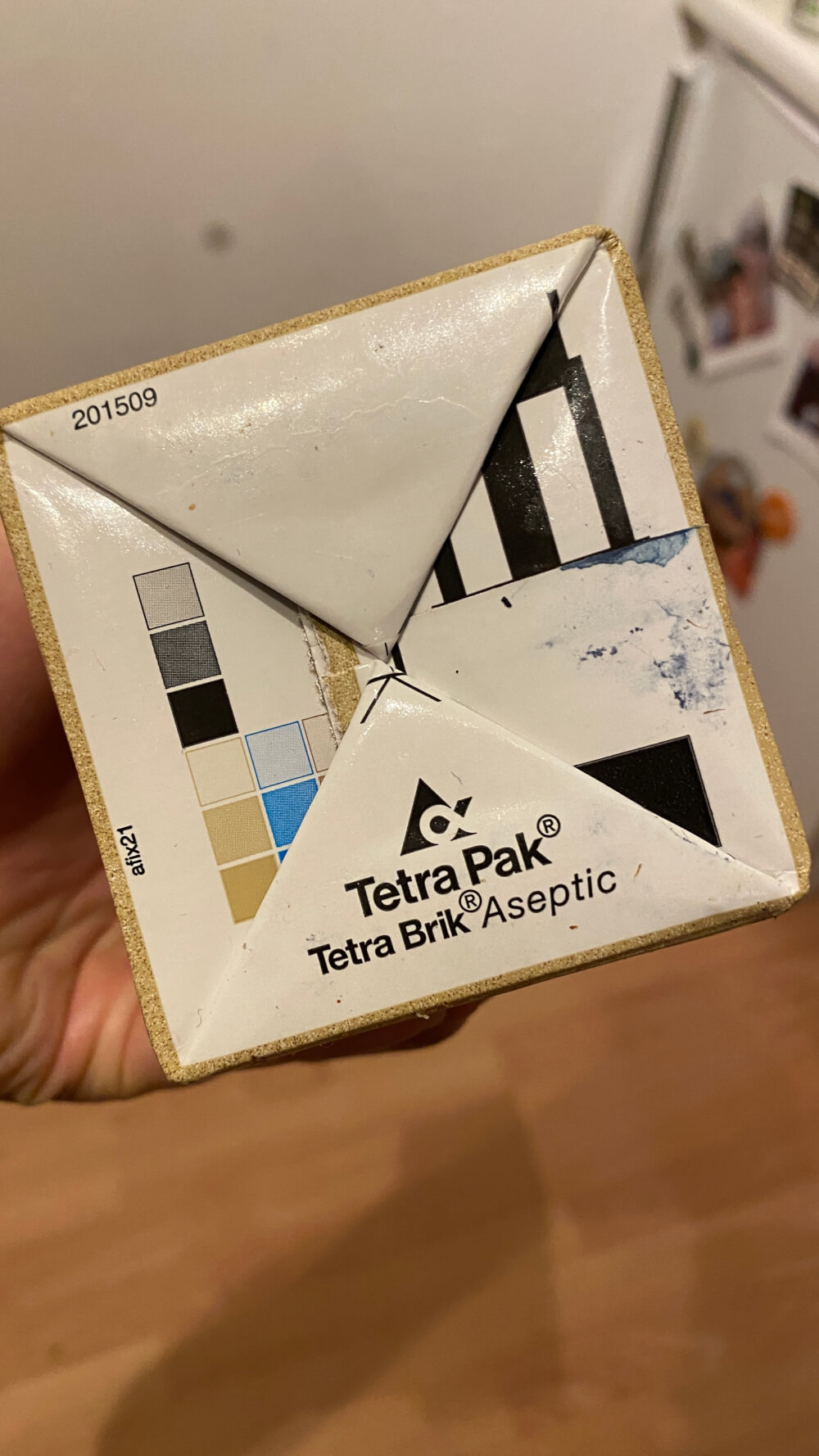
How Do I recycle styrofoam In Munich?
AVM Munich separates styrofoam into three different categories:
- Clean styrofoam from packaging
- Dirty/soiled styrofoam from packaging
- Styrofoam used as insulation material
According to the official AVM page about styrofoam here, the clean styrofoam that you’ll most likely get from packaging can simply be thrown in with Plastic (Kunststoffe) containers at the recycling islands.
For dirty and soiled packaging styrofoam, as well as insulation styrofoam, small amounts can simply be disposed of in the grey Rest-Mülle bins, whereas large quantities must be taken to recycling centers.
Can I Use (Compostable) Plastic Bags For The Bio-Tonne?
Plastic bags of any kind are not allowed in the Bio-Tonne. The official AVM website has explicitly stated here that even biodegradable/compostable bags may not enter in the Bio-Tonne, because these bags take too long to decompose… so the short answer is, no!
Paper bags however are fine, as are small amounts of newspaper padding to soak up the moisture of your Bio-Tonne.
Where Can I Donate Old Clothes In Munich?
The AVM has special “Altkleidcontainer” bins around the city for you to deposit used clothing. Click here for a map of them.
NOTE: These bins are usually quite full and can only handle donations in small bags (e.g. no large garbage bags for instance).
The following items can be deposited into these AVM containers:
- Women’s, men’s and children’s clothing
- Clean, wearable shoes
- Hats, gloves
- Household linen (tablecloths, bath towels, etc.)
- Curtains
- Bed linen
The following items cannot be deposited into these AVM containers:
- Dirty or wet textiles
- Ski boots, ice skates, rubber boots, roller blades
- Dirty, single or broken shoes
- Remnants of fabric and wool, scraps of textile
- Trash or garbage of any kind
You can also find a list of Munich organizations here that are looking for item donations.

How Do I Give Old Stuff Away?
For larger items like furniture, you can put out an ad for items that are “Zu Verschenken” (to give away) free of cost on eBay Kleinanzeigen. Your phone will explode from notifications and messages but you’ll get rid of things pretty easily this way.
Another place to post things to give away would be local Munich Facebook groups, but of course eBay Kleinanzeigen offers a lot more privacy.
For smaller items like books, some people simply put everything in a box and put them outside their houses/buildings with a sign saying “Zu Verschenken”.
NOTE: According to our research, you technically, you shouldn’t be putting these boxes in public places and only on your own private property (e.g. your own house).
Lastly, if you are hoping to donate goods to charities and organizations in Munich, there is a list here of organizations accepting donations. Click on each organization name to see what they are accepting and how to arrange for a donation drop-off.
Any More Questions About How To Recycle In Munich?
Feel free to ask below and we’ll try to find you an answer! Hope you found this recycling guide to Munich helpful. Best of luck, and may the Pfand be with you.
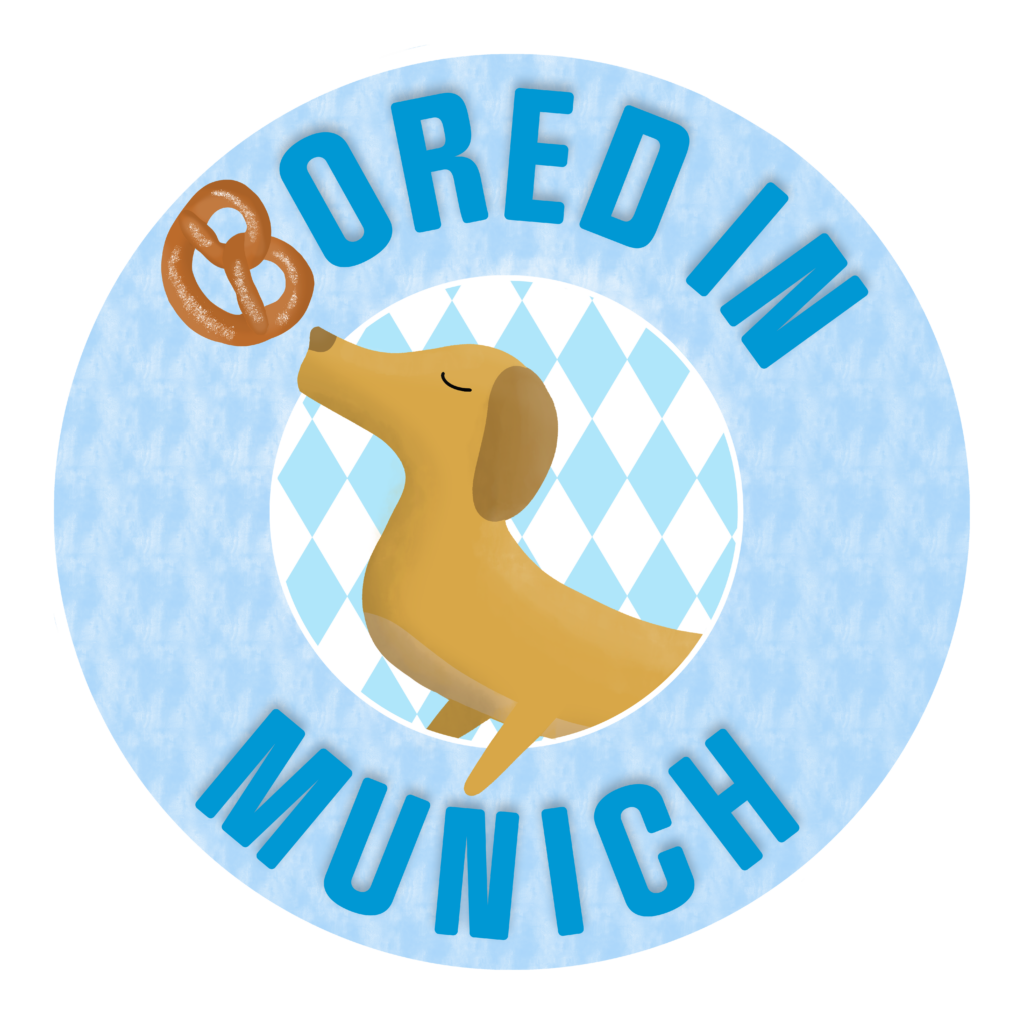
This is a great list! Thanks for making it easy to understand. I’m trying to donate my semi-broken computer. The harddrive died but everything else is still working. Are there places to donate electronics that could probably be refurbished?
Hi there, Thanks for the comment, glad to know it was so helpful (:
We are in the process of updating the post to add those details, but regarding waste, here is a good resource ➡️ https://www.ear-system.de/ear-verzeichnis/sammel-und-ruecknahmestellen#no-back
If you put in your post code, they will let you know the nearest place you can drop off your items.
Hope that helps!
Hi,
I have an old luggage, still functioning, I just don’t like it anymore. Where can I dispose that?
If I put it as “zu verschenken”, how long does it allowed on public place before I have to disposed it?
Regards
That’s a good question! from a personal perspective ( not the official answer), zu verschenken seems to be the go-to way, however, what we’ve noticed works is if you leave it next to the recycling bin for clothes . This is the big one that can usually be found next to the bins for clear, brown and green glass, but we will follow up and make sure to get an official answer to add to this post later on. Thanks for bringing that to our attention (:
Hi, great list!! thanks for creating it.
I have some orange containers (wood ones) which I got from Lidl, not sure where to dispose them.
Can you help?
Thanks
Hitesh
Thanks so much! The easiest solution would be to google a ‘Wertstoffhof’ and add in your address to find the nearest location near you
Hello! I bought some new kitchen knives, how should I dispose of the old ones?
The Wertstoffhof is the location you’d want to find, it is this large center where you can find a bin to recycle just about anything!
Where can I dispose ceramic?
Thank you for such an informative article. I have pillows, which are still in good use, where should I dispose them please?
You can put them in the Textil bin-it’s usually marked for old clothes but pillows (if still good)